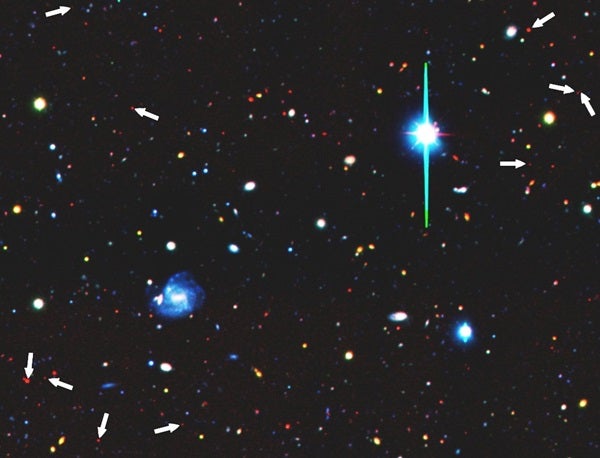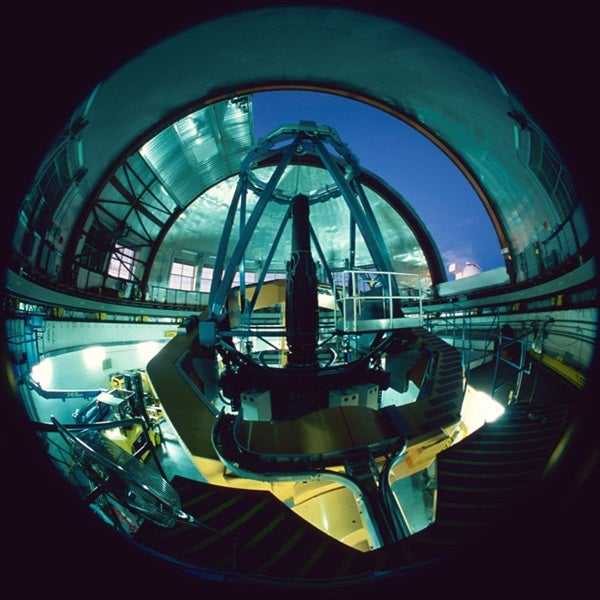Using the most sensitive images ever obtained with the United Kingdom Infra-Red Telescope (UKIRT), astronomers have found convincing evidence that galaxies, which look old early in the history of the universe, reside in enormous clouds of invisible dark matter and will eventually evolve into the most massive galaxies that exist in the present day.
The distant galaxies identified in the UKIRT images are considered elderly because they are rich in old, red stars. However, because the light from these systems has taken up to 10 billion years to reach Earth, they are seen as they appeared in the very early universe, just 4 billion years after the Big Bang. The presence of such fully evolved galaxies so early in the life of the cosmos is hard to explain and has been a major puzzle to astronomers studying how galaxies form and evolve.
These halos are invisible to normal telescopes but their mass can be estimated through analysis of galaxy clustering.
Hartley explains, “Luckily, even if we don’t know what dark matter is, we can understand how gravity will affect it and make it clump together. We can see that the old, red galaxies clump together far more strongly than the young, blue galaxies, so we know that their invisible dark matter halos must be more massive.”
“This provides a direct link to the present day universe,” says Hartley, “and tell us that these distant old galaxies must evolve into the most massive but more familiar elliptical-shaped galaxies we see around us today. Understanding how these enormous elliptical galaxies formed is one of the biggest open questions in modern astronomy and this is an important step in comprehending their history.”
Hartley spoke at the RAS National Astronomy Meeting in Belfast on Tuesday April 1.












